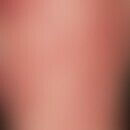Synonym(s)
DefinitionThis section has been translated automatically.
Rubi fruticosi folium, the dried leaves of the blackberry, is used to treat inflammation of the mouth and throat and diarrhea.
Quality is specified in the German Drug Codex (DAC).
HMPC: not processed
ESCOP: not processed
Commission E-monograph: Internal: non-specific, acute diarrheal diseases; external: mild inflammation of the oral and pharyngeal mucosa.
Empirical medicine: astringent, antidiarrheal, as gargle for inflammation of mucous membranes, washes for skin rashes; formerly used for excessive menstruation (hypermenorrhea), white flow.
IngredientsThis section has been translated automatically.
Rubi fruticosi folium contain 5-14% tannins (gallotannins), flavonoids and various organic acids (malic acid, citric acid, isocitric acid, oxalic acid, succinic acid) as well as essential oils.
You might also be interested in
EffectsThis section has been translated automatically.
The ingredients of blackberry leaves have an astringent effect. They also have an antioxidant effect.
Field of application/useThis section has been translated automatically.
Blackberry leaves are used for acute, non-specific diarrhoea and mild inflammation of the mouth and throat mucosa.
DosageThis section has been translated automatically.
The usual daily dose of the drug is 4.5 g and is administered (either alone or combined with other drugs) as a tea infusion or mouthwash or in another preparation for ingestion.
Note(s)This section has been translated automatically.
Fermented blackberry leaves (less tanning agents) are a popular decaffeinated substitute for black tea and are a common ingredient of house teas. It is possible to collect blackberry leaves yourself and then dry them. Care should be taken to dry the blackberry leaves slowly and with good ventilation, as they will not ferment if dried quickly in the sun.
LiteratureThis section has been translated automatically.
- Asnaashari M et al,(2015) Antioxidant activity of raspberry (Rubus fruticosus) leaves extract and its effect on oxidative stability of sunflower oil. J Food Sci Technol 52:5180-5187.
- Díaz DI et al.(2015) Effect of wall material on the antioxidant activity and physicochemical properties of Rubus fruticosus juice microcapsules. J Microencapsul 32:247-254.
- Riaz M et al.(2014) Neuropharmacological effects of methanolic extracts of Rubusfruticosus L. Turk J Med Sci 44:454-460.
- Rigon RT et al,(22016) Microencapsulation by spray-drying of bioactive compounds extracted from blackberry (rubus fruticosus). J Food Sci Technol 53:1515-1524.
- Schilcher H (2016) Guide to phytotherapy. Urban & Fischer Verlag Munich, p. 90 f.
- Verma R et al. (2014) Rubus fruticosus (blackberry) use as an herbal medicine. Pharmacogn Rev 8:101-104.
- https://arzneipflanzenlexikon.info/blackberry.php
- https://www.awl.ch/heilpflanzen/rubus_fructicosus/brombeere.htm
Blaschek W (2015) Wichtl tea drugs and phytopharmaceuticals. A handbook for practice. Wissenschaftliche Verlagsgesellschaft Munich. S 565-566




